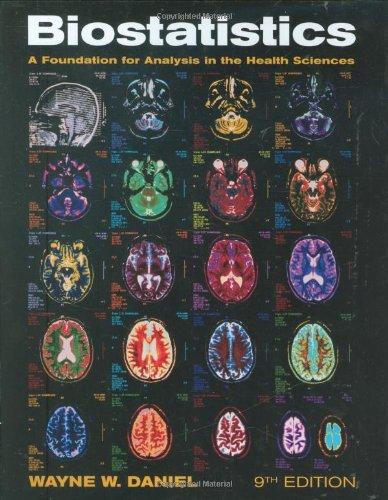Gallagher et al. (A-32) conducted a descriptive study to identify factors that influence womens attendance at cardiac
Question:
Gallagher et al. (A-32) conducted a descriptive study to identify factors that influence women’s attendance at cardiac rehabilitation programs following a cardiac event. One outcome variable of interest was actual attendance at such a program. The researchers enrolled women discharged from four metropolitan hospitals in Sydney, Australia. Of 183 women, only 57 women actually attended programs. The authors reported odds ratios and confidence intervals on the following variables that significantly affected outcome: age-squared (1.72; 1.10–2.70). Women over the age of 70 had the lowest odds, while women ages 55–70 years had the highest odds.), perceived control (.92; .85–1.00), employment (.20; .07–.58), diagnosis (6.82, 1.84–25.21, odds ratio was higher for women who experienced coronary artery bypass grafting vs. myocardial infarction), and stressful event (.21, .06–.73). Characterize this study as to whether it is observational, prospective, or retrospective. Describe the variables as to whether they are continuous, discrete, quantitative, qualitative, a risk factor, or a confounding variable. Explain the meaning of the reported odds ratios.
For each of the Exercises 35 through 54, do as many of the following as you think appropriate:
(a) Apply one or more of the techniques discussed in this chapter.
(b) Apply one or more of the techniques discussed in previous chapters.
(c) Construct graphs.
(d) Construct confidence intervals for population parameters.
(e) Formulate relevant hypotheses, perform the appropriate tests, and find p values.
(f) State the statistical decisions and clinical conclusions that the results of your hypothesis tests justify.
(g) Describe the population(s) to which you think your inferences are applicable.
(h) State the assumptions necessary for the validity of your analyses.
35. In a prospective, randomized, double-blind study, Stanley et al. (A-33) examined the relative efficacy and side effects of morphine and pethidine, drugs commonly used for patient-controlled analgesia
(PCA). Subjects were 40 women, between the ages of 20 and 65 years, undergoing total abdominal hysterectomy. Patients were allocated randomly to receive morphine or pethidine by PCA. At the end of the study, subjects described their appreciation of nausea and vomiting, pain, and satisfaction by means of a three-point verbal scale. The results were as follows:
Satisfaction Unhappy/ Moderately Happy/
Drug Miserable Happy Delighted Total Pethidine 5 9 6 20 Morphine 9 9 2 20 Total 14 18 8 40 Pain Unbearable/ Slight/
Drug Severe Moderate None Total Pethidine 2 10 8 20 Morphine 2 8 10 20 Total 4 18 18 40 Nausea Unbearable/ Slight/
Drug Severe Moderate None Total Pethidine 5 9 6 20 Morphine 7 8 5 20 Total 12 17 11 40
Step by Step Answer:

Biostatistics A Foundation For Analysis In The Health Sciences
ISBN: 9780470105825
9th Edition
Authors: Wayne W. Daniel






